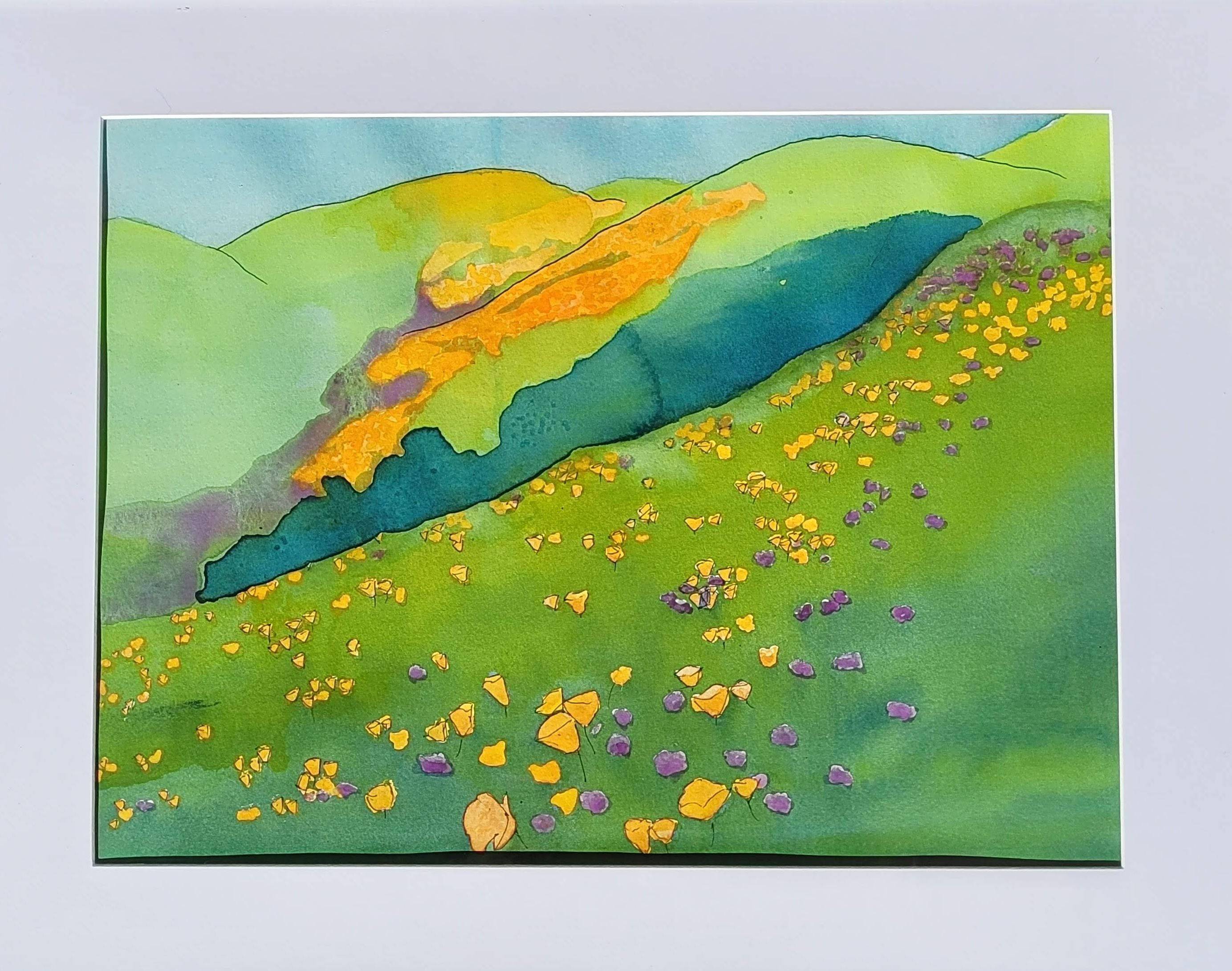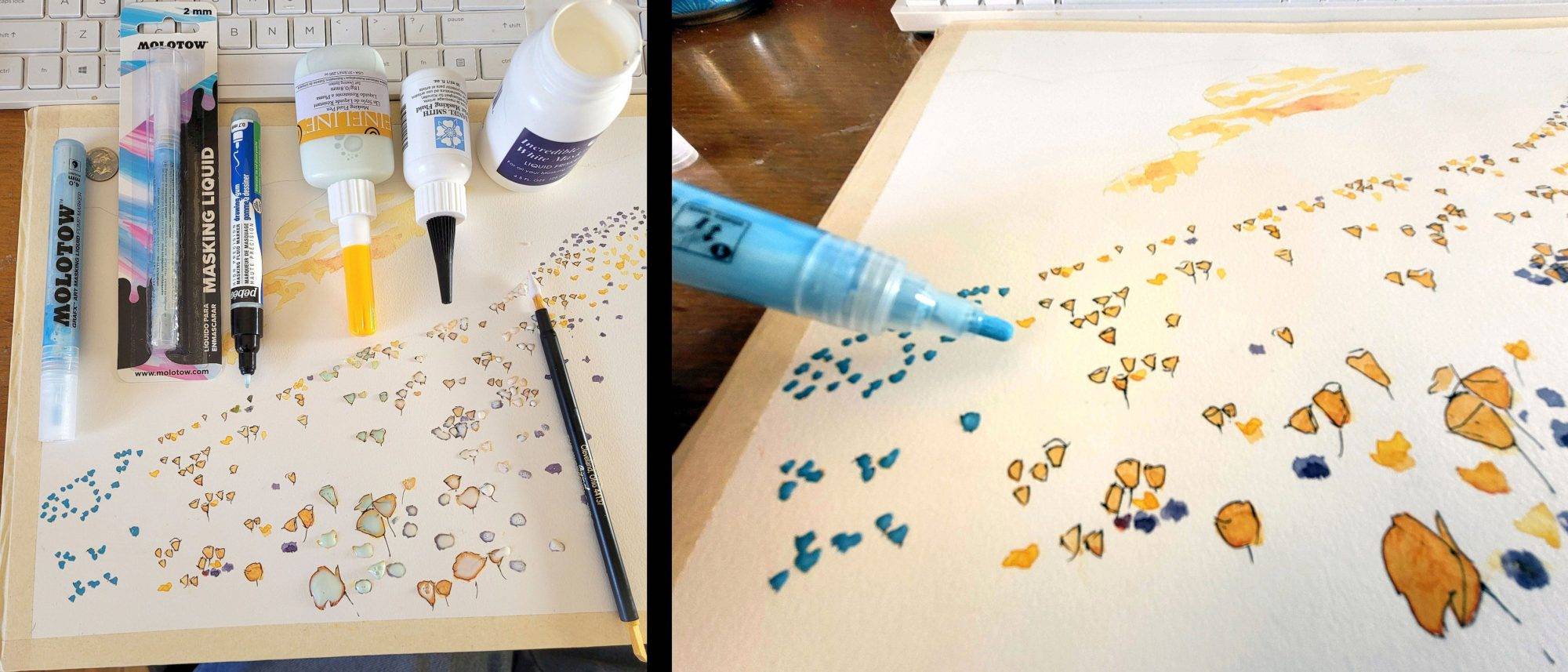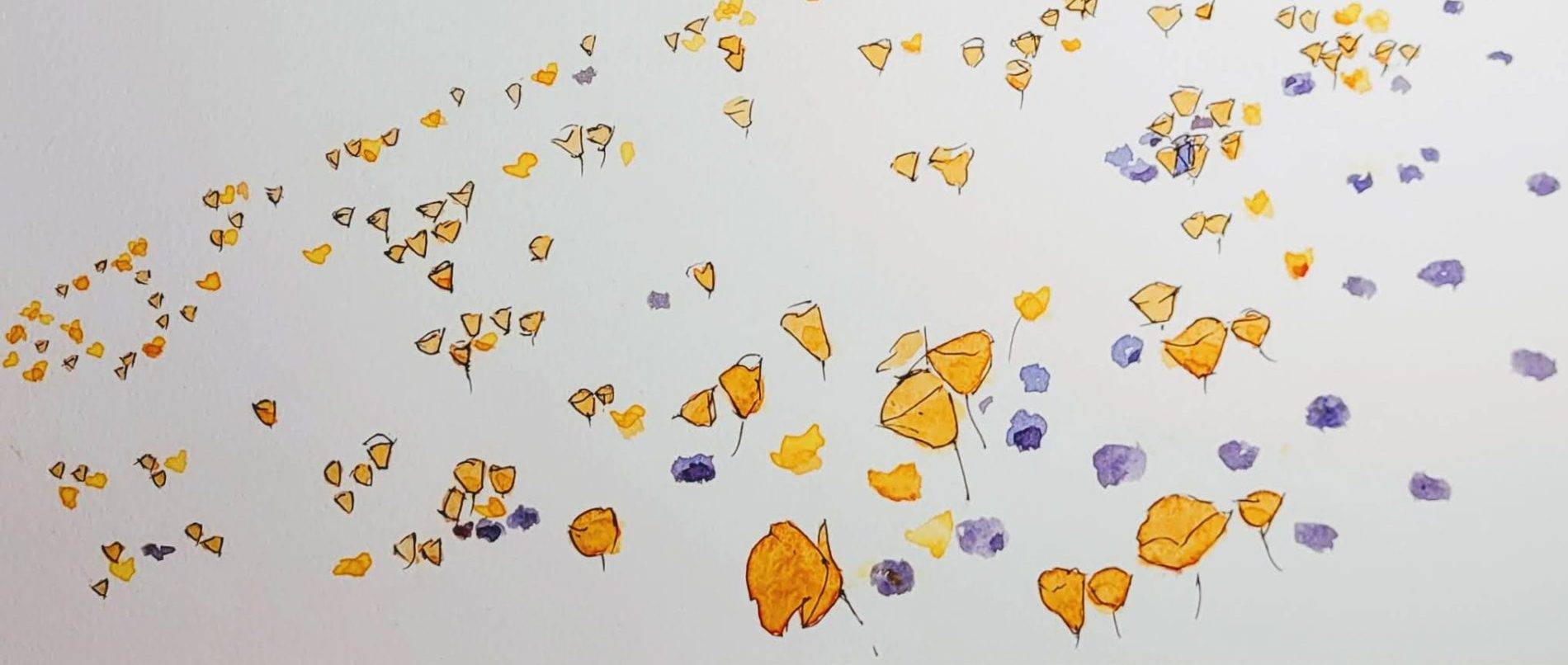
A very pretty landscape scene is a hillside filled with wildflowers. Like autumn leaves, wildflowers are transformational to the color of a landscape. Wildflowers change hills of green to patches of yellow, orange, red, and blue. This can be one of the most challenging watercolor painting situations because of the side by side color mix. Peppered orange over green can be accomplished easily with oil paint or acrylic. In fact, the Impressionist painters worked in this way, setting color spots down adjacent to each other, even causing a sparkling vibration between the contrasting colors.
Watercolor is a totally different process and requires a lot of planning. We work from light to dark, back to front, and in transparent overlays. True white is accomplished by saving the paper. Masking can reserve whites (or dry paint) for building adjacent color. Speckling is another way to build adjacent color but it is less controlled and not as clean as masking.
Masking fluid is sometimes called liquid frisket. Frisket is an oil paper screen used in an elementary printing process. Liquid frisket is a suspended latex that dries leaving the remaining solid where it was placed. If the wildflower portions are saved, the green hillside can be painted freely. The orange spots for the wildflowers can be painted – dried- and then masked over. I like the precision of painting the wildflower positions first but you could just randomly mask and then paint wildflowers last.
The size of the wildflower heads will change with the depth into the scene. Heads closer to the viewer are larger than those further away. An applicator that works for large and small objects would be nice but you may need two types of applicators.
Equipment for placing masking fluid can be found in the art store with the masking fluid. If you already have masking fluid and you are dipping a nib or a brush into the fluid then the applicator can change appropriately. Rinsing between uses is important and some recommend soap to protect your brushes. Whatever you use to apply the masking fluid may be gummed up by the latex. For that reason you should not use an expensive brush. Applicators can be a stick, nib, knife, or brush. Applications can be direct with the pen / applicator / knife, by spatter with a toothbrush / paint brush, or by pouring and spreading.
I tested the six masking fluid products shown above. For the purpose of covering irregular small to medium size shapes, the best applicator and masking fluid was GrafX Molotow 4 mm pen https://www.dickblick.com/items/molotow-grafx-art-masking-liquid-pump-marker-4-mm-/ They call it a pump marker because an occasional push down on the pen is required to keep the fluid fresh and moving. It was very easy to use and allowed me to fill in irregular parts of the wildflower heads. The rounded tip makes detail control easy. The light blue masking fluid a finer consistency than the white liquid found in other frisket products. The consistency made for a thin coating, which allows easy work without blocking the paint movement during your watercolor wash.
The smaller GrafX Molotow applicator 2 mm pen never worked due to age or a mechanical clog. The Pebeo masking fluid 0.7 mm pen was a problem to use. I would not recommend either of these smaller applicators.
The second best applicator and masking fluid was the Fineline Masking Fluid 0.8 mm pen https://www.dickblick.com/items/masquepen-1-oz-bottle/ The applicator is a steel tube and has a needle type insert to prevent it from clogging when not in use. This was easy to apply but was sometimes too easy and went on too thick. The same was true of the Daniel Smith applicator – easy to use but less control over fine detail shapes.
The Incredible White Mask and Nib was OK. It is a wooden stick and harder to work with less control. I can see alternative uses for a pouring type of liquid mask though and I have ordered the booklet Using Liquid Frisket from the Grafix manufacturer for those other ideas.

